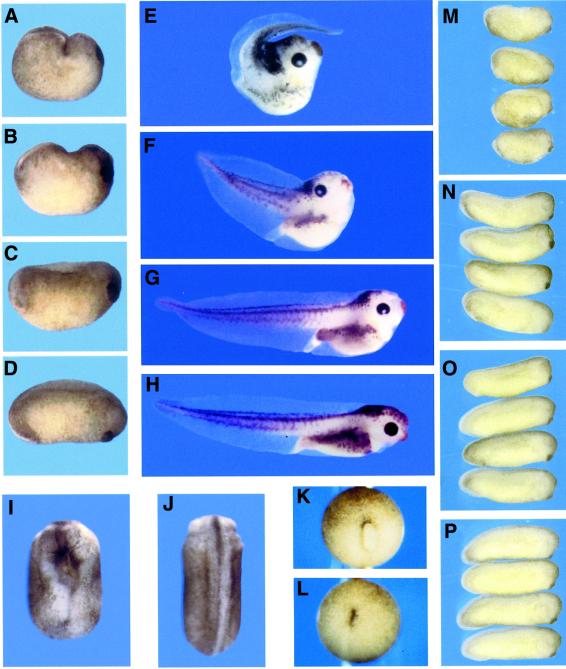Fig. 2. Phenotypes of Stbm- and anti-Xstbm morpholino-injected embryos. Injection of 0.5 ng of Xstbm RNA into the dorsal marginal zone at the four to eight cell stage impairs axial elongation and causes dorsal flexure. (A–C) Lateral views of post-neurula Xstbm-injected embryos show that the dorsal side is shortened (C) relative to uninjected controls (D), or buckled into a characteristic transverse fold (A and B). At tadpole stages (E–H), mild (G), moderate (F), and severe (E) phenotypes can be loosely distinguished by the degree to which the posterior axis is deflected dorsally or forward. (H) Uninjected control. Xstbm overexpression also causes neural tube closure defects [(I); compare with sibling control in (J)]. (A–H) Lateral views with dorsal up and anterior to the right; (I and J) dorsal views with anterior up. Blastopore closure is often delayed in Stbm-injected animals: an example is shown in vegetal view at stage 13 (K), when this process is complete in uninjected sibling embryos (L). (M–P) Injection of 20 ng of anti-Xstbm morpholino oligo results in embryos that are on average 30% shorter at tail-bud stages. (M) Xstbm oligo; (N) mismatch control oligo; (O) unrelated oligo; (P) uninjected.

An official website of the United States government
Here's how you know
Official websites use .gov
A
.gov website belongs to an official
government organization in the United States.
Secure .gov websites use HTTPS
A lock (
) or https:// means you've safely
connected to the .gov website. Share sensitive
information only on official, secure websites.
